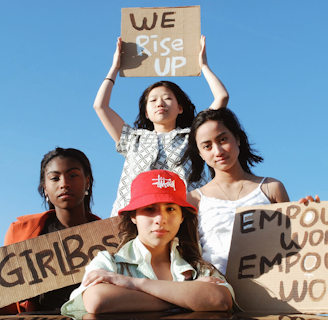10 Pivotal Roles Promotores/Community Health Workers Play in Public Health
CHW/Ps are the unsung heroes in public health. Deeply connected with their communities, they drive health equity, cultural competence, and holistic care. Explore their multifaceted roles and the potential for a brighter healthcare future through our FirstImpact Blog.
WORKFORCE & PRACTICE INNOVATION


The Pivotal Role of Promotores and Community Health Workers in Public Health
The community health landscape has witnessed profound changes over the years; innovation has spurred novel ways to incorporate actors that may help advance health equity through holistic systems and prevention-based approaches.
Community health workers/promotores (CHW/Ps) are critical agents of this transformation. These individuals are crucial frontline public health workers who often share deep cross-cultural alignment with their communities due to shared life experiences and values and a heightened sense of trust and compassion.
The Many Labels of CHW/Ps
CHW/Ps have also been referred to as care coordinators or family advocates, and other terms such as:
Family advocate
Health coach
Health educator
Health and wellness program coordinator
Health navigators
Outreach worker
Patient navigator
Peer coaches
Peer counselor
Peer health leader
Peer navigators
Promoter or promotores
Service coordinator
This speaks to the multitude of roles a CHW/P can bring value to. Each position above may be or already has experimented with the CHW/P model in some shape or form and may also be testing payment and financing mechanisms to reimburse CHW/Ps for their time. Learn more about financing for CHW/Ps here.
The Diverse Roles of Community Health Workers/Promotores
Below, we've described some ways CHW/Ps have implemented their skills, techniques, and approaches to produce significant changes in health delivery, health behaviors, and community health outcomes more broadly. We hope this serves as food for thought and facilitates discussion around how to partner with or integrate CHW/Ps into your work.
1. Outreach and Education
CHW/Ps bridge medical knowledge and community understanding. By conducting culturally-adapted outreach and health education in varied settings like homes, community centers, and even labor camps, they demystify complex health topics and dethrone misconceptions or misinformation surrounding numerous health topics.
Their efforts transcend mere information dissemination; their critical lens can become pivotal in helping eradicate the stigma attached to thorny issues, including mental health.
4. Community Empowerment
Empowerment is at the heart of the CHW/Ps' mission in the community. A unique part of their focus is on knowledge transfer, ensuring individuals are self-sufficient, are informed about their health decisions, and understand their available services to help them through life circumstances. Their advocacy efforts span beyond personal and interpersonal issues to addressing broader systemic challenges, providing support at every level.
7. Promotion of Health Equity
In a society rife with disparities and growing inequality, CHW/Ps act as social justice advocates fighting against health inequities. They methodically address social determinants of health, advocate for the rights of marginalized populations, and challenge systemic issues like racism and oppression.
This orientation opens numerous advocacy and civic engagement opportunities that CHW/Ps can lead and facilitate, including voter registration and education, civic engagement activities in local government, and co-designing public awareness campaigns.
The Potential of Promotores Moving Forward
Currently, there is an untapped potential in the CHW/P field. Although many opportunities exist, standardized training to license CHW/Ps remains to be seen. Their role in healthcare will be integral to humanizing healthcare, interrupting the symptom- or disease-centered view of illness, addressing upstream determinants of health, and bridging crucial health and social support.
Financing their work and ensuring optimal program development is paramount. As the health sector continues to evolve, innovation in financing strategies for CHW/Ps is an area ripe for exploration, as discussed in our upcoming blog on financing CHW/Ps.
In California, a wave of funding has opened opportunities for CHW/Ps, including through the statewide initiative CalAIM. Learn more about these opportunities here.
A Finishing Thought
CHW/Ps form the backbone of a community-centric approach to public health. Their role will only become more pivotal as we look to the future. We must urge policymakers and decision-makers to provide opportunities for CHW/Ps to be integrated into the workforce and compensated fairly to fully recognize, respect, and resource the invaluable work of CHW/Ps.
At FirstImpact, we support identifying and securing funding for a diverse array of projects incorporating CHW/Ps. If you contemplate integrating CHW/Ps into your programs and work plans, we are happy to provide guidance and facilitate partnership building with CHW/P providers. For more information, contact us today.




















2. Facilitating Access
Despite the enormous advancements in medical science made over the decades, the American healthcare system is daunting and ever more dizzying to navigate for many.
CHW/Ps simplify this by ensuring communities enroll in health insurance and understand their eligibility for programs and benefits. They also facilitate access to primary and specialized care and effectively navigate the health system. Beyond medical needs, they also assist with identifying and enrolling patients in essential social services and supportive resources like housing navigation and legal aid.
3. Cultural Competence
With the United States being a melting pot of cultures, ensuring culturally-informed healthcare is essential.
CHW/Ps within specific ethnic communities, including African Americans, Native Americans, Latinos, and Asian Americans, can play an especially vital role in molding interventions so they culturally and emotionally resonate with target communities.
For instance, African American CHWs have helped address hypertension and diabetes by promoting synergy between clinic-based efforts and community-based strategies. Similarly, Native American CHWs have facilitated a deeper understanding of traditional healing practices and their confluence with modern medicine.
As alluded to above, CHW/Ps serve as trusted community members, bridging linguistic and cultural gaps and ensuring medical care is about healing the body and understanding the soul.
5. Care Coordination
Comprehensive and coordinated care is the need of the hour, and CHW/Ps play a central role. They work with multidisciplinary teams to ensure clients receive integrated care without duplicated services. This prevents individuals from having to repeat themselves or re-share information that may be traumatic to relive or experience again.
Recently, their role in merging behavioral health and primary care services has helped ensure consistent and accurate communication across providers and facilitate adherence to care plans.
6. Research Contribution
CHW/Ps aren't just field workers; they contribute significantly to research and knowledge production by collecting and refining data (including measures, datasets, and variable definitions), co-designing and conducting surveys, and facilitating community-centered research; they shine a light on essential nuances around care plans and policy changes and help mold public health policies and practices that are genuinely community and person-centered.
8. Emergency Response
The recent global health crisis showcased the indispensable role of CHW/Ps. Their involvement in providing accurate information, assisting in contact tracing, and ensuring communities have access to resources was critical to thwarting the devastating impacts of the pandemic.
With the rising rate of natural disasters disproportionately impacting low-resourced communities, CHW/Ps will be key in rapidly disseminating resources and education, activating community-wide support networks, and serving as frontline advocates representing the needs of communities among decision-makers and big corporate interests.
9. Innovative Care Models
As healthcare evolves, so do the methods of CHW/Ps. With such a graceful role and diversified skill set, the CHW/P community is a hotbed of innovation. They continuously innovate new tactics to address emerging issues (e.g., community-centered contact tracing and stigma-busting COVID-19 education), find new ways to leverage virtual and automated technology, cultivate cross-sectoral and cross-cultural partnerships, and tailor their approach to the community's unique needs and social context.
10. Professional Advancement
CHW/Ps are not static in their roles and continually refine and build on their skill sets. They are dedicated to their professional growth, seeking training, leadership roles, and even specialty certificates that provide issue and population-specific training. This is why investing in the long-term development of CHW/Ps can be so worthwhile.


